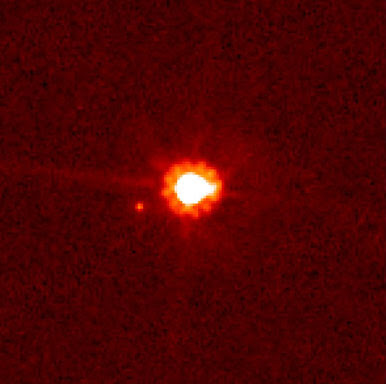A team of scientists at Northern Arizona University, Missouri State University, and Flagstaff's Lowell Observatory has revealed that the frozen surface of Eris, the largest-known dwarf planet orbiting the Sun, is predominantly covered in nitrogen ice, similar to the surface of Pluto.
Stephen Tegler, NAU professor of physics and astronomy and lead author of "Methane and Nitrogen Abundances on Eris and Pluto," presented the team's findings Oct. 5, at the 42nd annual meeting of the American Astronomical Society's Division for Planetary Sciences in Pasadena, Calif.
The paper also was submitted for publication to the Astrophysical Journal.
Tegler's results integrated two years of work conducted in NAU's new ice lab, in addition to astronomical observations of Eris from the Multiple Mirror Telescope Observatory from Mount Hopkins, Ariz., and of Pluto from Steward Observatory from Kitt Peak, Ariz.
"There are only a handful of such labs doing this kind of work in the world," Tegler said. "By studying surfaces of icy dwarf planets, we hope to get a better understanding of the processes that affect their surfaces."
NAU's ice lab grew optically clear ice samples of methane, nitrogen, argon, methane-nitrogen mixtures, and methane-argon mixtures in a vacuum chamber at temperatures as low as minus 390 degrees Fahrenheit to simulate the planets' cold surfaces.
Light passed through the samples revealed the "chemical fingerprints" of molecules and atoms, which were compared to telescopic observations of sunlight reflected from the surfaces of Eris and Pluto.
"By combining the astronomical data and laboratory data, we found about 90 percent of Eris's icy surface is made up of nitrogen ice and about 10 percent is made up of methane ice, which is not all that different from Pluto," said David Cornelison, coauthor and physicist at Missouri State University.
Discovered in 20
Subscribe to:
Post Comments (Atom)







No comments:
Post a Comment